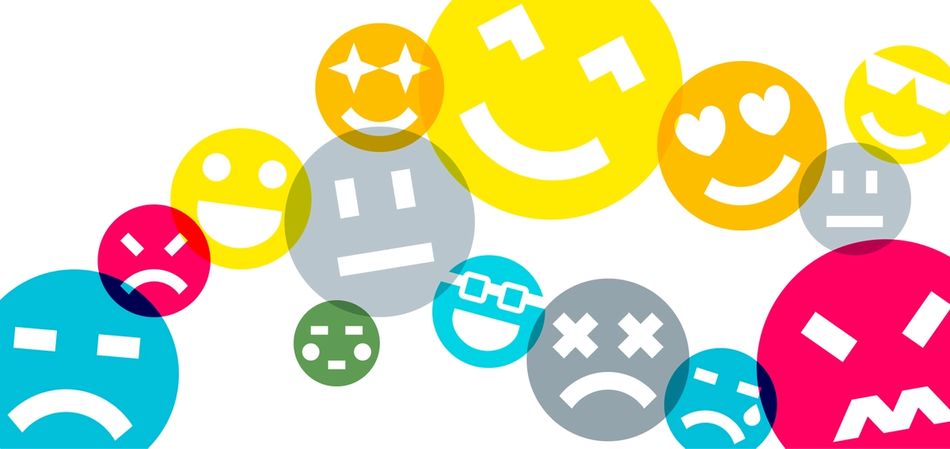
Last fall, I was hit by a car.
I was biking down 8th street in San Francisco when a car cut across traffic and slammed into me. I was thrown to the ground, startled, and concussed.
I’m one of the co-founders of Range, and to be honest, my first step was to message my coworkers saying I’d be late for the team meeting.
Without hesitation though, two of my coworkers came straight to the scene. They proceeded to go with me to the hospital and to wait for hours as I got prodded, tested, and finally, released. They took me home and even brought over Gatorade, ice packs, and the best medicine of all, Sour Patch Kids.
I was blown away by their kindness that day, but what has proven even more powerful was their emotional support and openness in the days and weeks that followed.
Having emotions at work
Concussions are known to reduce your ability to manage emotions — kind of like hormones, you’ll find yourself bursting into tears or getting angry in situations you wouldn’t normally.
Going back to work after the accident meant that I was going to have to get comfortable being emotional in front of my coworkers.
But emotions at work are kind of taboo. You’re not supposed to get angry, certainly not supposed to cry, and generally, it seems like the most extreme emotion you’re supposed to express is a deep desire for a cup of coffee.
We all have hard days, weeks, months, and sometimes even years. Life happens — having a child, caring for aging parents, getting married, getting divorced, moving, depression, anxiety, and everything else that life brings.
Ostensibly, these things happen outside of work, and we like to pretend that they stay there. However, when you didn’t sleep last night or you just got in a big argument with your spouse, these events impact how you show up at work, how you connect with you teammates, and the quality of the work you can create.
We can’t always control what happens in life, so we’re left with a decision: either find a way where we don’t have emotions anymore, or, create a workplace that can allow for emotions — especially the not-so-fun ones—and that can even support us in processing them.
Why sharing your emotions matters
Like many injuries, concussions worsen if you push yourself too hard — at the beginning you’re advised to do literally nothing. No reading, no watching TV, no walking, no anything. If you ignore the concussion and go about life as normal, you’ll soon be nauseous and more debilitated than you were before. (Trust me, I know.)
Emotions operate in much the same way. You can’t ignore your emotions and expect them to disappear. Instead, research shows that acknowledging and exploring your emotions is a key step in understanding and moving through them.
And it turns out that sharing your emotions with others is really important, too: Research shows that vulnerability is a key part of human connection. Your emotional wellbeing (i.e., your happiness) depends on human connection and is strongly tied to physical health and mortality.
On a team, vulnerability allows you to build relationships with coworkers that are deep and meaningful — which in turn builds psychological safety, the key predictor of team success. Plus, positive, emotional cultures are more productive and less likely to cause burnout, and are one of the hallmarks of highly effective teams.
How to encourage emotions at work
A few months into my concussion recovery, I got into a tense discussion with a coworker that ended in me ugly crying. This was a big moment for me and for our team: It was the first time I had shown such strong emotions in front of them. And traditional wisdom would say this was a bad thing — I’d gotten so upset that I’d cried! But, I took a different view:
My tears weren’t a sign of a problem in the workplace, but instead, a reflection of my strong sense of safety and comfort with my team.
I was upset. That was a fact. I could have hidden my tears away or kept them bottled up, but instead, I felt comfortable expressing my emotion in front of them—which meant I could process and move on more quickly.
This sense of safety was a direct result of our team’s deliberate and intentional work. We’d spent months building up shared vulnerability with long walks, awkward conversations, personal questions, and more. And that vulnerability fed on itself such that my tears actually brought us closer and made us more effective as a team.
So, how do you build up this type of openness and vulnerability? Here are three simple ideas to try on your team:
- Role modeling: Regardless of your role on a team, if you start to share more about how you’re feeling, others will follow suit. You can start with something simple like sharing about your weekend during a 1:1, but it builds on itself, and pretty soon you’ll be talking about your fears during team meetings or even company all hands.
- Check-in rounds: Start team meetings with check-in rounds where each teammate can share how they’re doing. We’ve written about this before, and it’s a great way to build a habit of shared vulnerability. Read more about Check-ins here.
- Personal status updates: Incorporate the personal side into daily standups or work updates — ask a specific question like “how did you sleep last night” or “what’s your mood today?” to lower the bar for people sharing. Even something as simple as sharing an emoji over Slack can help start conversations about how people are doing.
These ideas are just the beginning. Encouraging emotions at work, whether you're on a remote team, a hybrid team, or always on site, is a long term shift, and things like coaching and therapy can help you and your team build up these skills at a deeper level. If you’re interested in learning more about empowering emotions and vulnerability at work, email me at emotions@range.co.
I’m glad to say that I’m back on my bike now. I still cry sometimes at work though, and luckily, it’s totally fine.
Good luck, and many thanks to Braden Kowitz and Dan Pupius for being there when I needed it.








